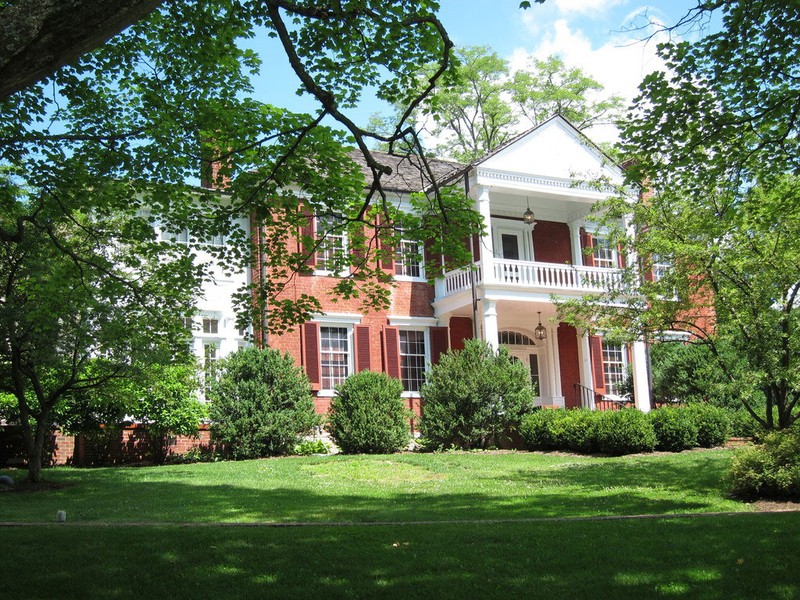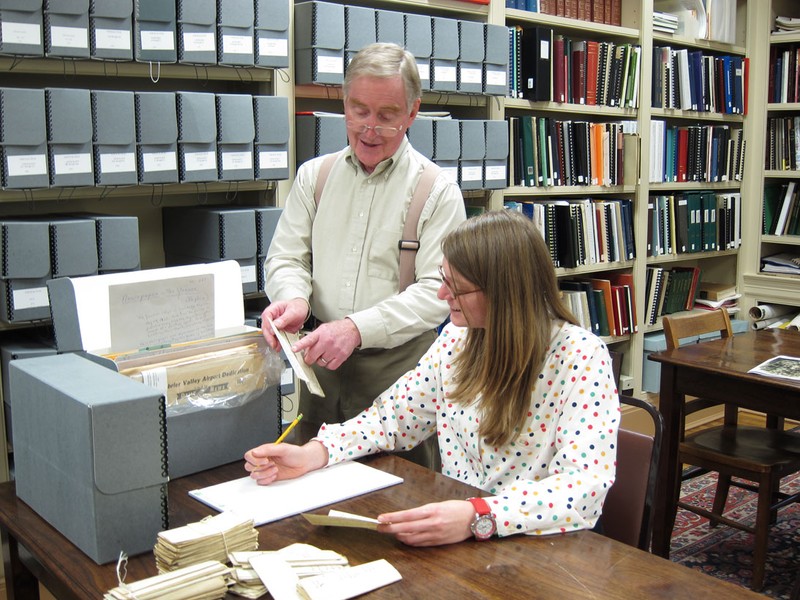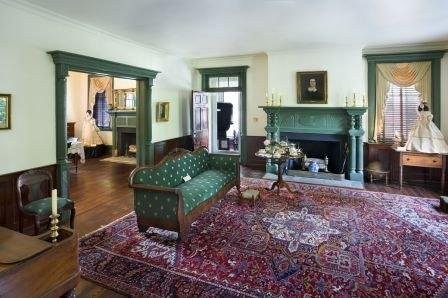John North House
Introduction
Text-to-speech Audio
Images
The Society was founded in 1963 and housed in a small cinder-block building until 1976 when it acquired the historic North House.

The archives and library are located in the North House along with the museum. Free research assistance is available whenever the museum is open.

Period Room: Parlor in the North House

Backstory and Context
Text-to-speech Audio
John North (1794-1857) served as a private in the War of 1812 and was appointed clerk of the Greenbrier District Court of Chancery in 1818, and married his wife Charlotte Blaine (1800-1883) of Lexington, VA the same year. North built his home in 1820, but sold to James Frazer later in 1836 and the structure became known as the Star Inn and Tavern.
“Particularly catering to the jurists of the District Court of Chancery, which met in Lewisburg. Early writers visiting the springs speak of the frequent pilgramages enjoyed by guests at White Sulphur, who made all-day trips to Lewisburg to hear the lawyers wax eloquent in their court oratory and to follow with a splendid meal at the Star.”1
When Lewisburg became the seat of the western division of the Supreme Court of Appeals of Virginia, the five judges appointed North as the divisional clerk. North soon became one of Lewisburg’s most influential citizens and is responsible for shaping the politics in Greenbrier County.
The house remained the Star Tavern and Inn until the property was purchased by Colonel Joel McPherson who deeded the property to his daughter Adeline Harris. Harris’ husband remodeled the house and it became a private residence again. In 1905, Greenbrier College purchased the home to house the college president.
The Greenbrier Historical Society initially began in 1859 but was disbanded during the Civil War. It did not reform until 1963. However, in 1938 the city of Lewisburg created the Greenbrier County Museum Committee. This committee was the founders of the museum. After the Greenbrier Historical Society was reformed in 1963, they took responsibility for the museum.
In 1976, the museum was moved from the second floor of the city library to the North House. The North House Museum is open Monday through Saturday. On selected days, the society’s archives and library are open for research. The museum is home to documents that are related to the history of the Greenbrier Valley. Collections from the Revolutionary War through World War II can be found here. There are Civil War artifacts and documents, an 18th Century Conestoga wagon, the first rural free delivery postal buggy, and the pack saddle used to break Traveller, Robert E. Lee’s horse. Looking in the rooms, one can get an idea of what early Virginia furnishings looked like.
Sources
1. Woods Dayton, Ruth. Greenbrier Pioneers and Their Homes. Charleston, WV. WV Publishing Company, 1942.
Anderson, Belinda "North House Museum." e-WV: The West Virginia Encyclopedia. 21 October 2010. Web. 10 June 2015.
Bunn, Morgan. The People Of The Old Stone Cemetery: The Burials. Self-published, 2017.
Bunn, Morgan. The People Of The Old Stone Cemetery: The Obituaries. Self-published, 2017.
Woods Dayton, Ruth. Lewisburg Landmarks. Charleston, WV. Education Foundation, Inc., 1957.
Greenbrier County Bicentennial 1778-1978. Lewisburg, WV. Greenbrier County Bicentennial Committee, 1978.
Historical Booklet Greenbrier County 160th Anniversary 1778-1938.
